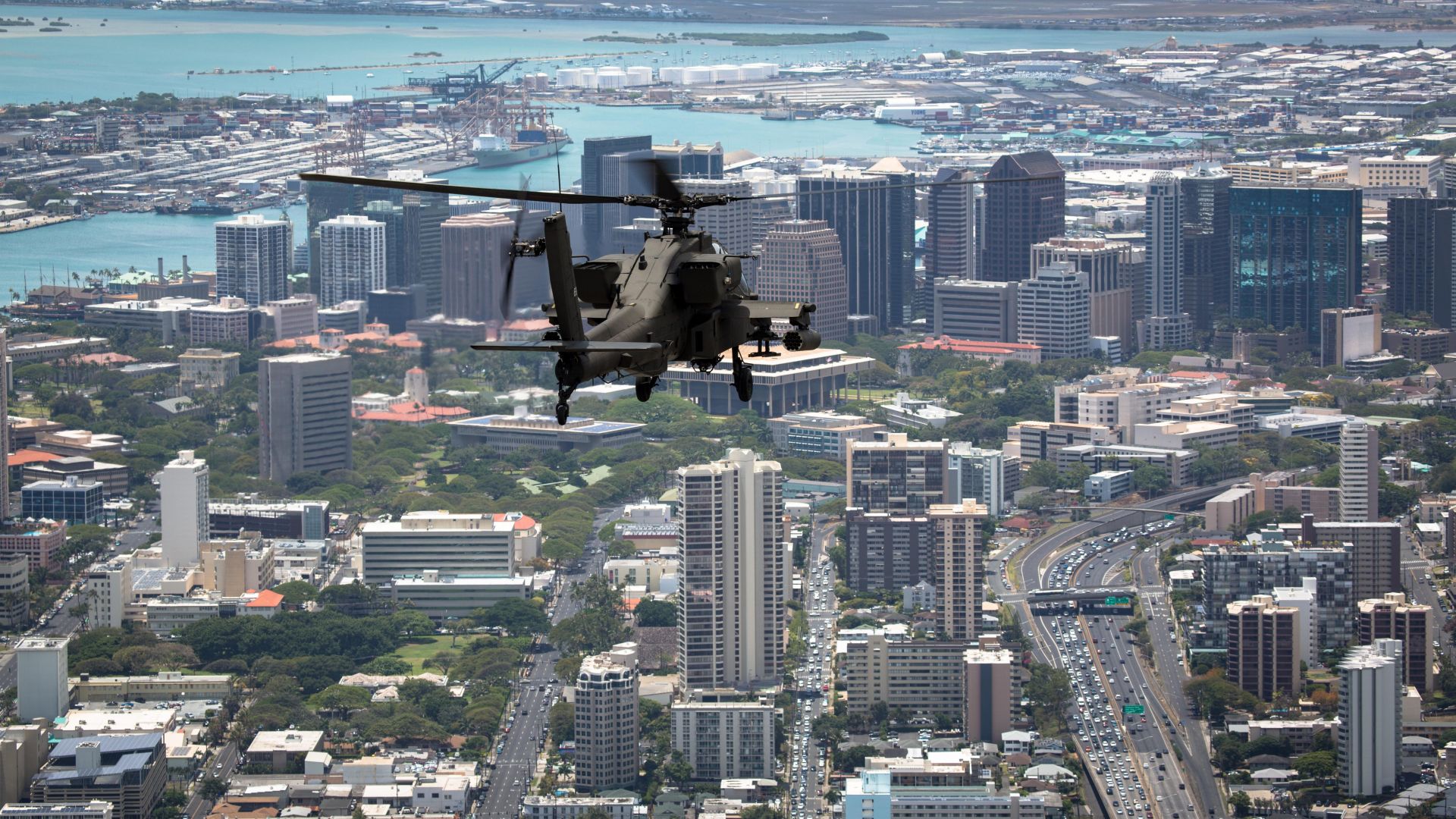The Soldiers of 2nd Squadron, 6th Cavalry Regiment, 25th Combat Aviation Brigade received their AH-64D Apache Longbow Attack Helicopters this week from National Guard units across the country.
The airframes are being transferred from the National Guard to the active duty Army as part of the Aviation Restructure Initiative in an effort to cut costs in Army Aviation and to fill the mission capability gap left by the retirement of the OH-58D Kiowa Reconnaissance Helicopter.
“The Apaches will primarily be used as a reconnaissance platform,” said Maj. Ian H. Benson, Operations Officer, 2-6th Cav. Rgt. “However, with the inherent firepower of the aircraft, Apaches will serve as a combat multiplier to any supported ground force commander.”
“The Apache provides greater lethality and accuracy with the increased firepower that it provides,” said Maj. Jacob Johnston, Executive Officer, 2-6 Cav. Rgt. “Additionally, the sensor package on the AH-64D provides greatly enhance optical clarity and subsequently better situational awareness for the aircrews and the ground force commander.”
The squadron received 24 airframes and will increase its operational abilities by adding eight RQ-7B Shadow v2 unmanned aerial vehicles to complement the reconnaissance and combat abilities of the Apache.
“The Apache is capable of deploying with a single nose mounted 30mm M230E1 Chain Gun, AGM-114 Hellfire anti-tank missiles, and Hydra 70 general-purpose unguided 70mm rockets,” said Johnston. “These weapon systems, combined with the Target Acquisition Data System and the Fire Control Radar, make the Apache an extremely adept fighter.”
“The Apache increases the lethality and the capability of the squadron to support ground elements within the 25th Infantry Division,” said Benson.
Planning for the aircraft transfer and replacement of the Kiowa took over a year. As of April 27 however, training for 2-6 Cavalry with their new airframes has commenced.
“We train to crew, team, platoon, and troop levels of gunnery proficiency,” said Johnston. “We project we will be fully mission capable by summer 2017. However, we expect we will be able to support live-fire exercises with supported ground units as early as October 2016.”
The ability to train on Oahu with infantry Soldiers on the ground in live-fire exercises helps to ensure that 25th ID Soldiers and the pilots above are capable of working hand in hand in the event of a contingency mission in the Pacific.
“We are able to train with the 30mm chain-gun and 70mm rockets here on the island,” said Johnston. “This capability will ensure we’re ready to fight with a trained and prepared force throughout the Pacific as needed.”










